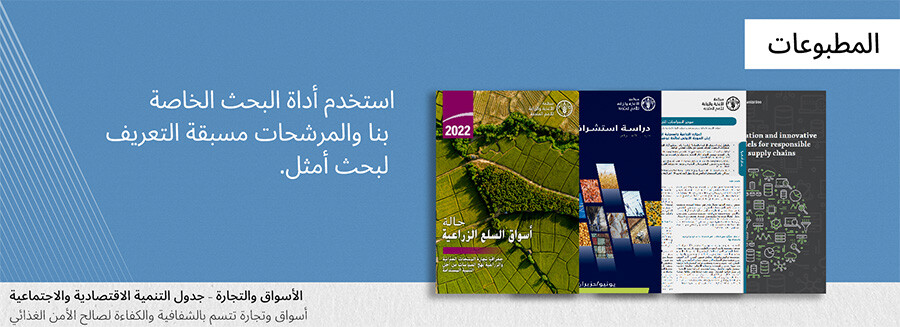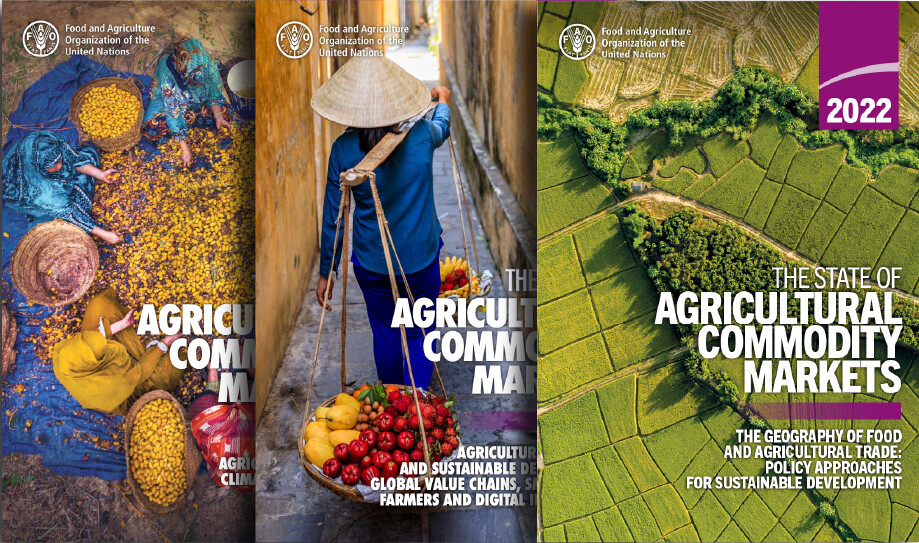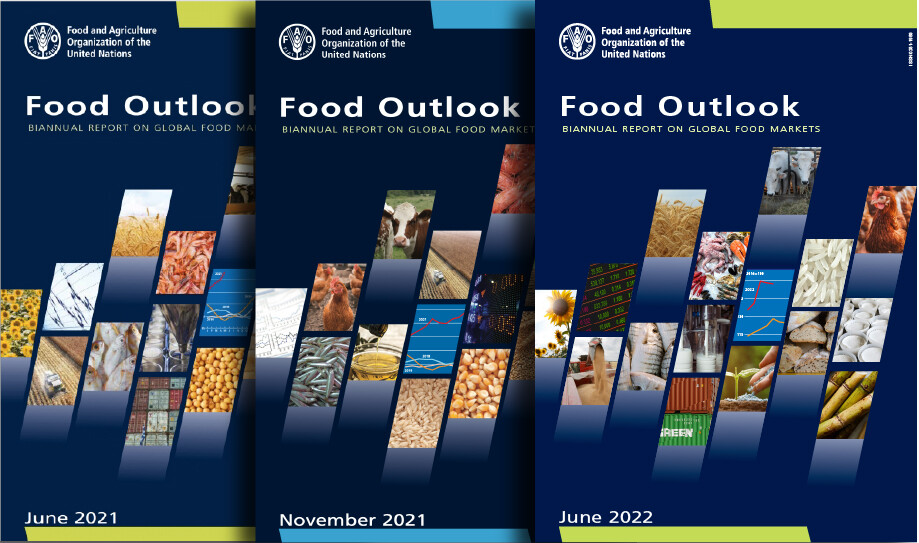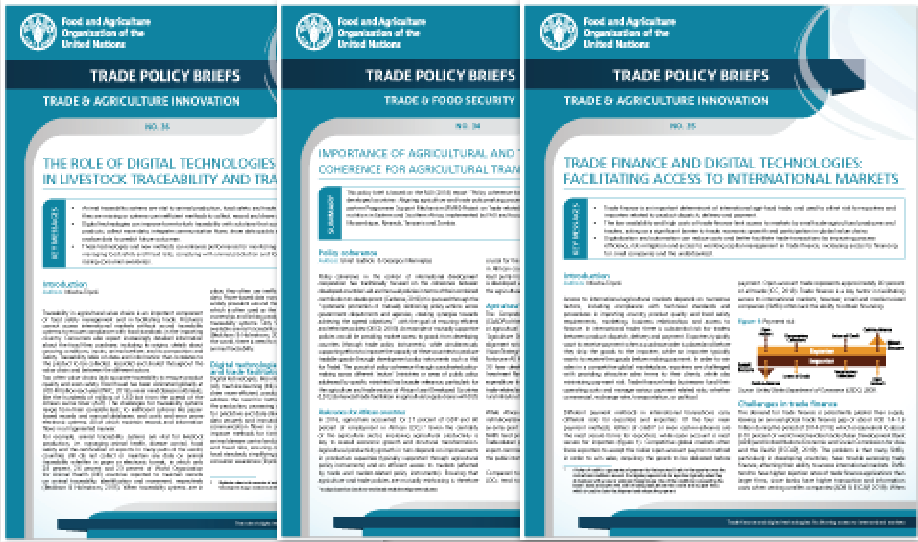المطبوعات
مطبوعات يعرض مركز المطبوعات الخاص بشعبة الأسواق والتجارة كامل مخرجات الشعبة. أما الطريقة الفضلى لإيجاد المطبوعات المطلوبة فتكون من خلال استخدام مرفق البحث الذي يمكنكم من خلاله اختيار مرشحات مسبقة التعريف لتحسين إمكانية الوصول إلى ما تبحثون عنه.
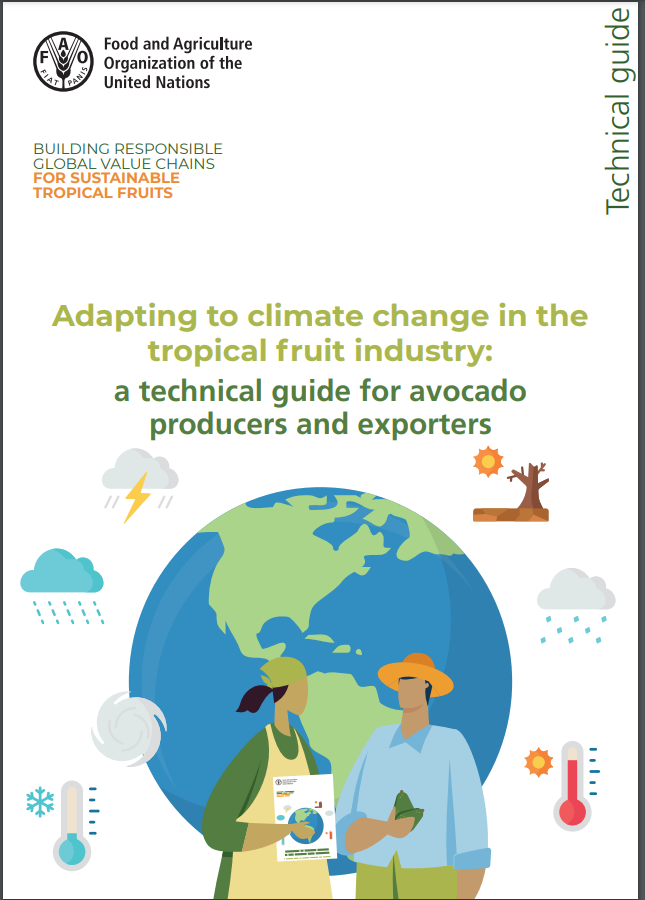
Adapting to climate change in the tropical fruit industry: a technical guide for avocado producers and exporters
Climate change is impacting global food production systems, making the challenge of feeding the world’s growing population more difficult than ever before. The tropical fruit sector is particularly at risk from the negative impacts of climate change driven by rising temperatures, extreme weather events, and associated challenges such as water stress and increased pests and diseases. This poses significant risks for the long-term sustainability of production and trade of important...
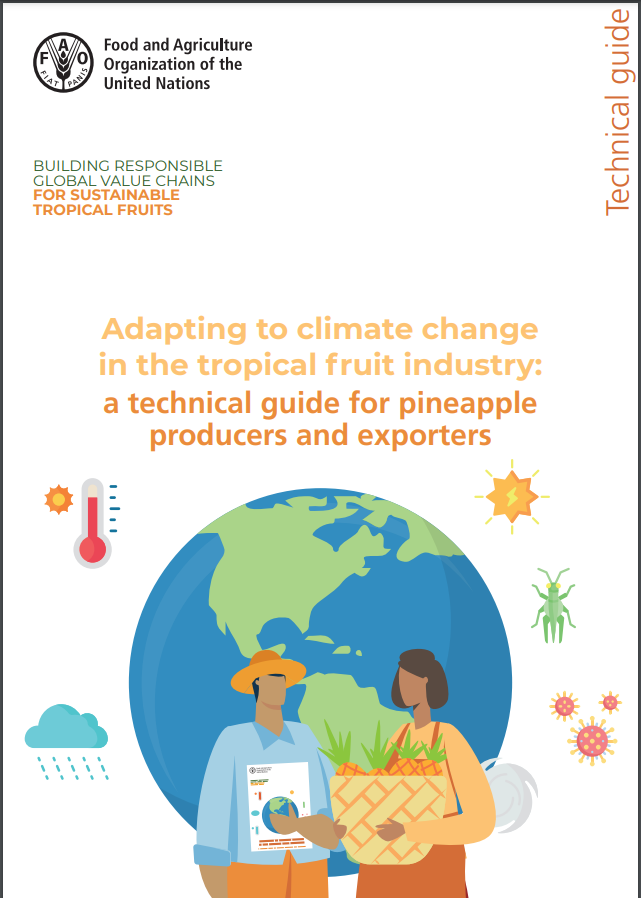
Adapting to climate change in the tropical fruit industry: a technical guide for pineapple producers and exporters
Climate change is impacting global food production systems, making the challenge of feeding the world’s growing population more difficult than ever before. The tropical fruit sector is particularly at risk from the negative impacts of climate change driven by rising temperatures, extreme weather events, and associated challenges such as water stress and increased pests and diseases. This poses significant risks for the long-term sustainability of production and trade of important...
Incentives are one of many tools that governments can use to promote investment. Incentives may encourage the establishment or growth of a sector and lead to jobs and revenue growth. Incentives may also have social and environmental sustainability impacts. This paper explores ideas for government incentives that can encourage responsible investment in the avocado and pineapple industry. It is particularly relevant to governmental actors and policy makers, as well as to...
The triannual Crop Prospects and Food Situation report provides a forward-looking analysis of the food situation across the globe, focusing on the cereal production outlook, market situation and food security conditions, with a particular attention on low-income food-deficit countries (LIFDCs). At the start of 2024, FAO assesses that globally 45 countries/territories, including 33 in Africa, nine in Asia, two in Latin America and the Caribbean and one in Europe, are in...
The cereal supply and demand balances included in this report present a subset of data from the FAO/GIEWS Country Cereal Balance System (CCBS) database created and continuously kept up to date by the Global Information and Early Warning System on Food and Agriculture (GIEWS) and Basic Foodstuffs teams of the Markets and Trade Division, with data since 1980. It contains annual supply and utilization balances for the main cereals produced...
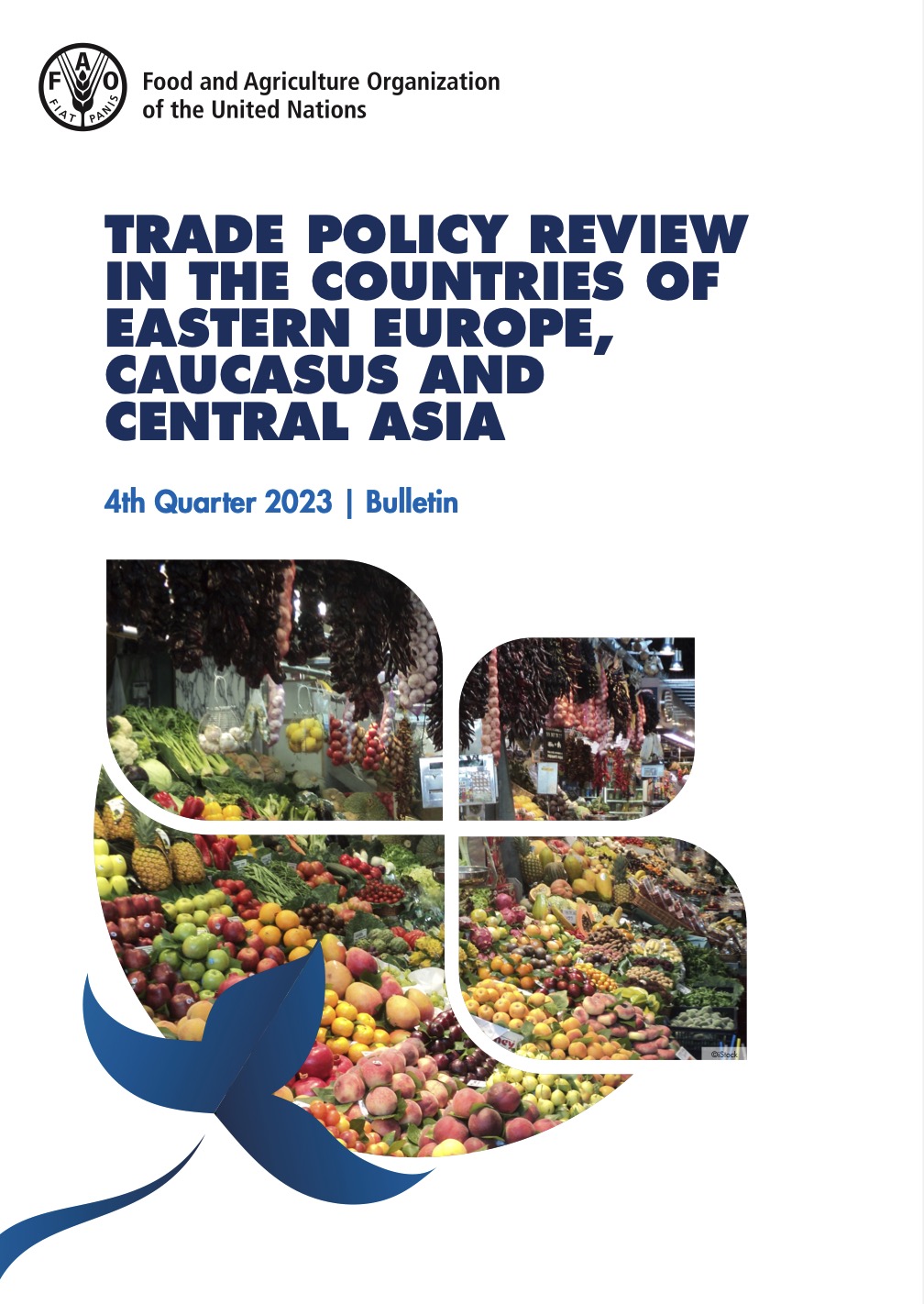
Trade policy review in the countries of Eastern Europe, Caucasus and Central Asia. 4th Quarter 2023 | Bulletin
This quarterly bulletin features agricultural trade policy changes in the region. It provides current trade measures, agreements, statistics and articles by experts covering trade-related issues in countries across the region, and it is sent to members of the Agricultural Trade Expert Network. The network connects experts from Eastern Europe, Caucasus and Central Asia as part of the FAO’s Regional Initiative 2 in Europe and Central Asia “Transforming food systems and...
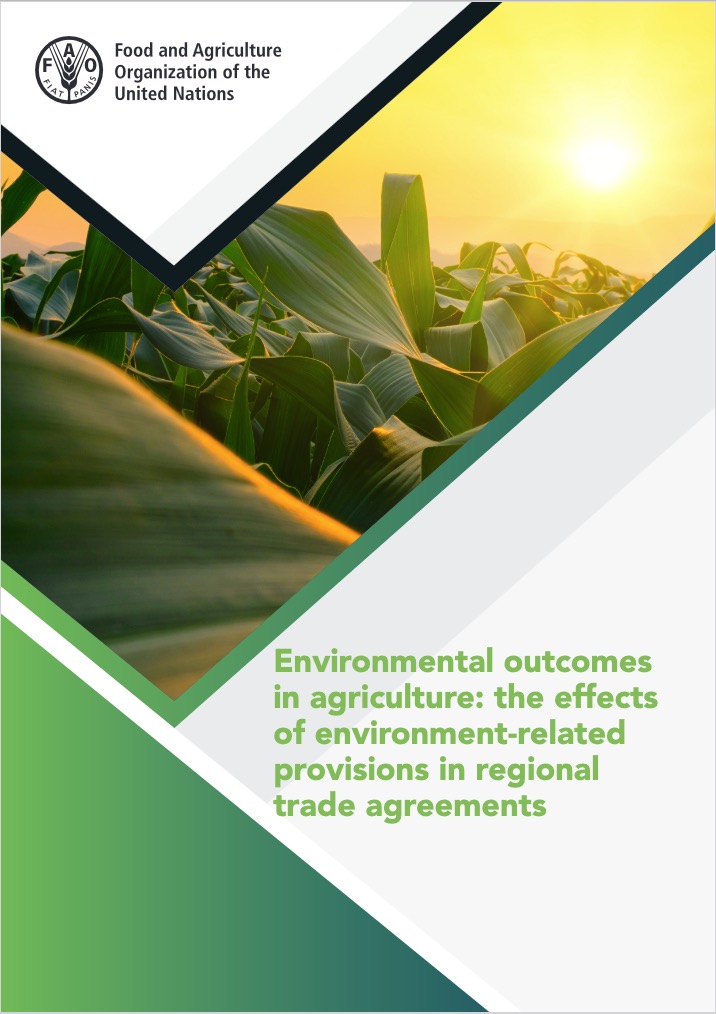
Environmental outcomes in agriculture: the effects of environment-related provisions in regional trade agreements
The agriculture sector is both a contributor to global greenhouse gas (GHG) emissions and is affected by trade policies. As more and more regional trade agreements (RTAs) include environment-related provisions (ERPs), this technical note explores whether agriculture-related ERPs in RTAs are associated with reduced GHG emissions from agriculture. The research applies a novel dataset on ERPs related to the agriculture, forestry and fishery sectors (Ag-ERPs) to analyse this relationship in...
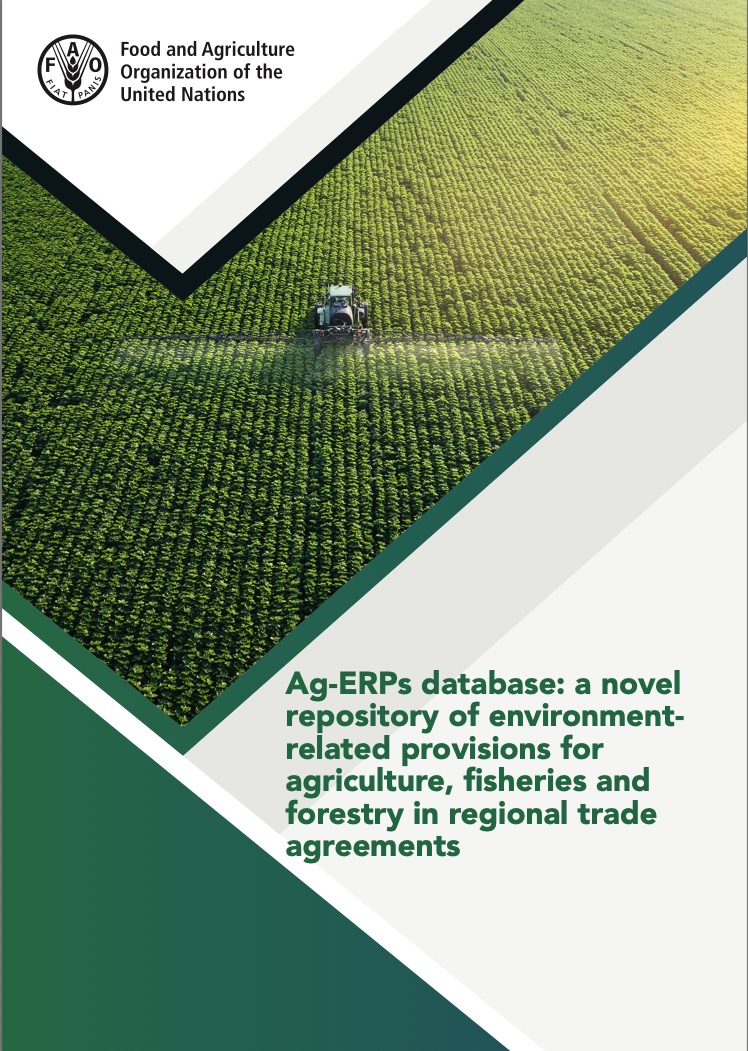
Ag-ERPs database: a novel repository of environment-related provisions for agriculture, fisheries and forestry in regional trade agreements
The relationship between trade and the environment is intricate. Trade can improve the allocation of production among countries, with an efficiency-enhancing role in natural resources use. Likewise, open markets can improve access to new technologies that make domestic production processes more cost-efficient and reduce the use of inputs as well as other environmentally harmful substances. However, economic growth due to trade expansion can have a direct impact on the environment...
The Monthly Price Update is an information product provided by the oilseeds desk of the Markets and Trade Division of FAO. It reviews the development of international prices for oilseeds, oils and meals as reflected by FAO’s price indices. In January 2024, the FAO price indices for oilseeds and oilmeals declined month-on-month, while the vegetable oil price index remained virtually unchanged. All three price indices remained below their respective year-earlier...
International wheat and coarse grain prices declined in January 2024 as large seasonal supplies exerted downward pressure on prices. By contrast, the FAO All Rice Price Index increased by 1.2 percent in January, largely reflecting increases in Indica quotations. FAO’s analysis of domestic staple food prices shows that high price levels persisted in December 2023 and January 2024. In most countries, domestic staple food prices remained elevated due to multiple factors,...

